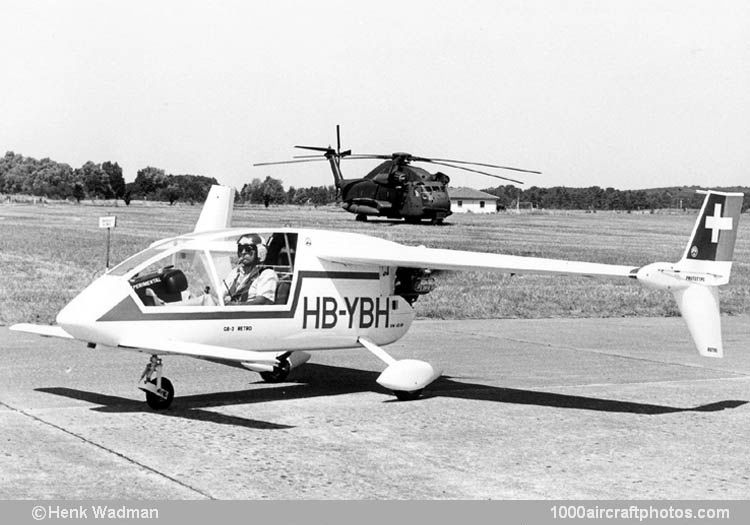Design of the GB-2, which was influenced by the Rutan VariEze, began in 1975 and construction started the following year. Approximately 1,500 working hours were spent building the prototype, and the first flight was achieved in August 1980. Development of the Retro, so named because of its rear-mounted wings and foreplanes, continued. A new propeller and three different forms of winglet have been fitted, and methods of reducing the weight of the aircraft have been investigated. Plans were not available to other builders, the fate of the aircraft is unknown."
Type: Single-seat tail-first light monoplane.
Wings: Cantilever shoulder-wing monoplane, with sweptback surfaces. Wing section NACA 64514. Composite structure of shaped foam covered with glass fiber/epoxy. Fixed winglets at tips, of similar construction.
Foreplane. Cantilever structure mounted low on nose. GU-25 section. Construction as for wings. Elevators on trailing edges.
Fuselage: Constructed of square-section aluminum tubing and riveted plywood, with glass fiber/epoxy skin. Engine mounted in rear end of fuselage.
Landing gear: Non-retractable tricycle type. Main units constructed of metal, wood and glass fiber. Main wheels enclosed in streamline fairings. Hydraulic disc brakes. Shimmy damper on nose wheel.
Power plant: A 45 hp Volkswagen modified motorcar engine of 1,600 cc, driving a three-blade ground adjustable pusher propeller of Bezzola design, with foam core and Kevlar skin, built by CIBA-Geigy's synthetics department. One fuel tank, of 12.15 gal (46 l) capacity.
Accommodation: Single seat. Angular cockpit canopy constructed of acrylic glass sheets glued on framework of light steel tubing, foam and glass fiber.
